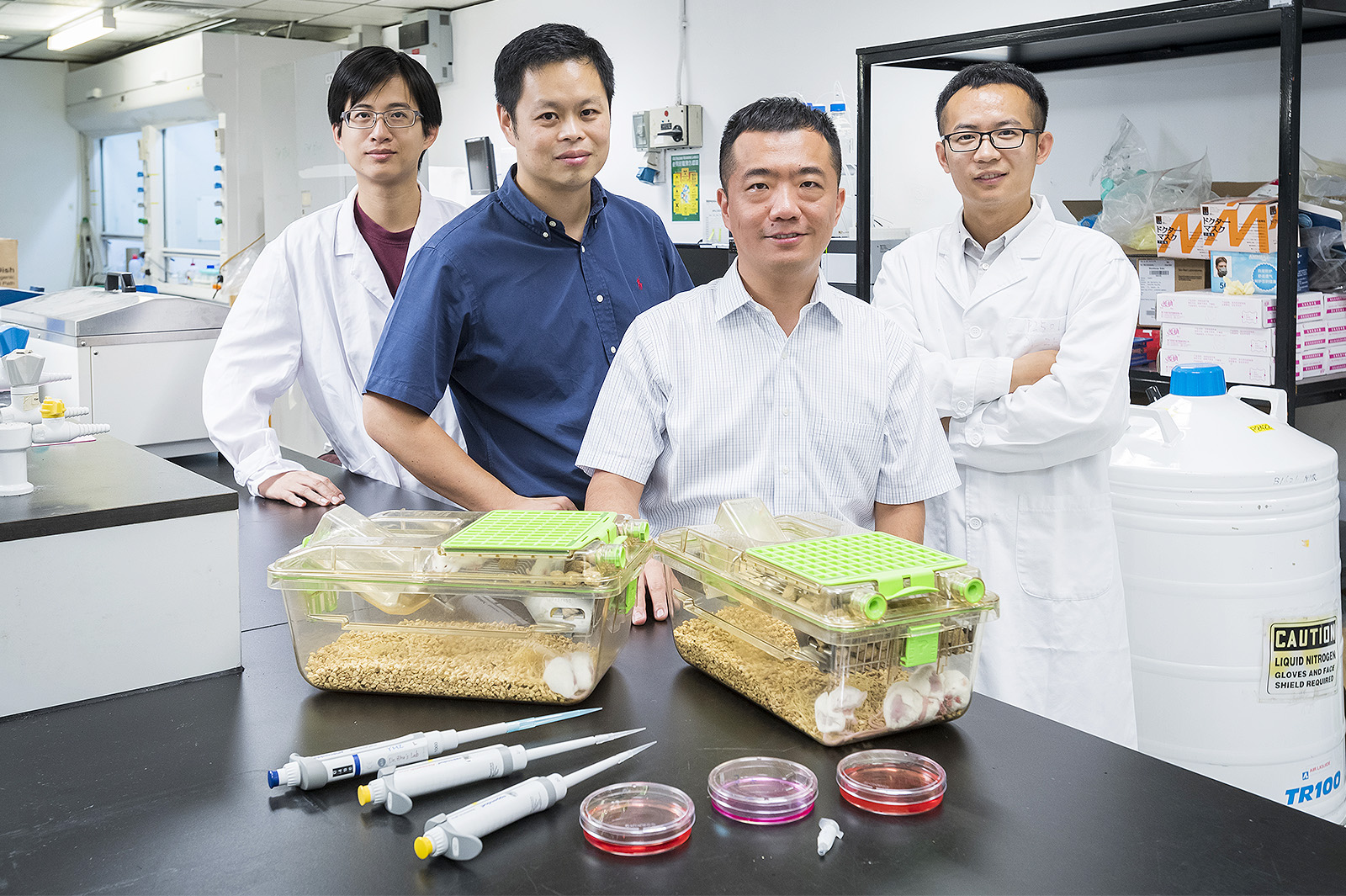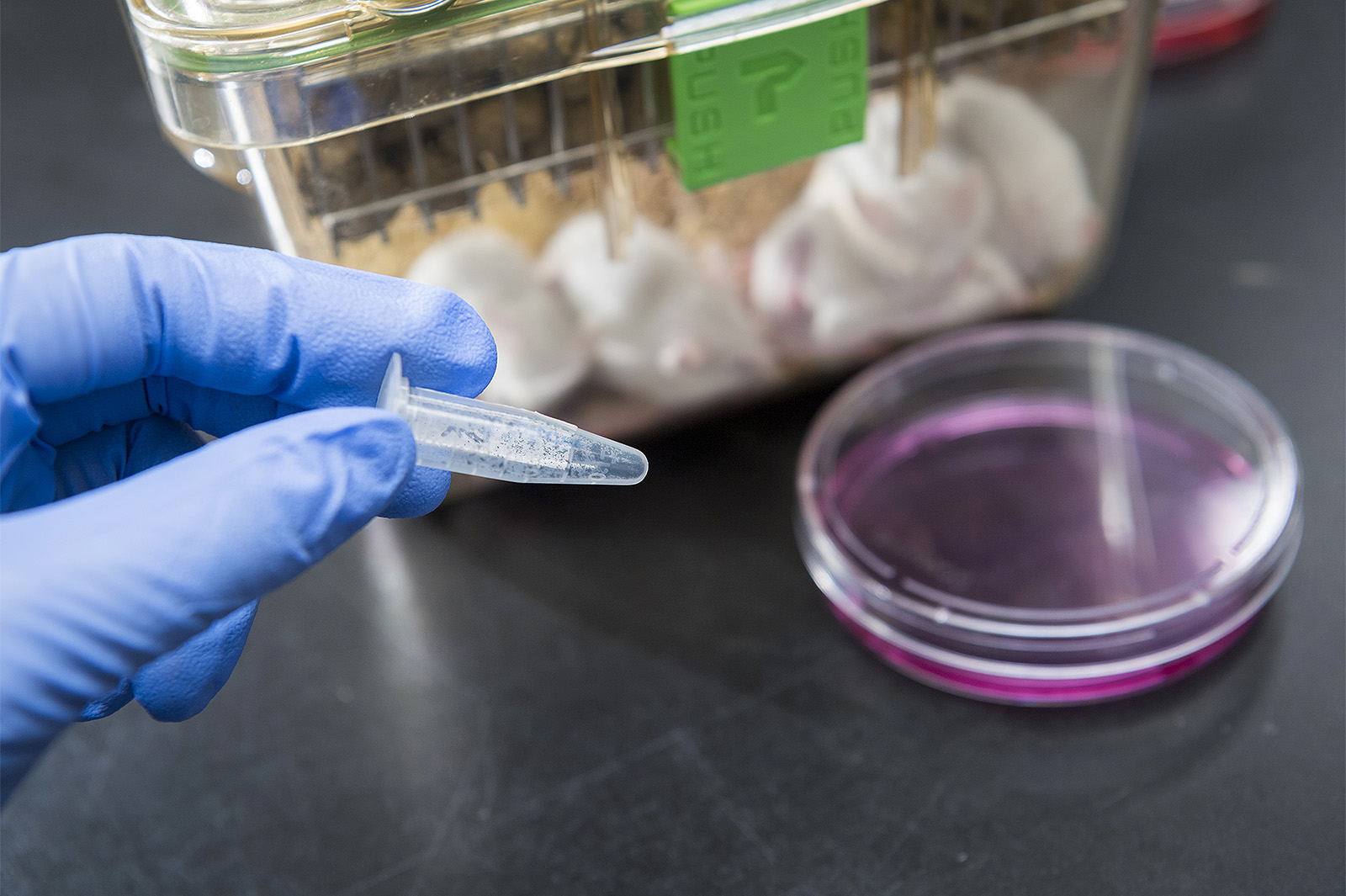CityU researchers cast new light on anti-cancer treatment

A pioneering approach to fighting cancer has revealed as much as a two-third reduction in tumour size and weight in laboratory tests using an anti-cancer chemical compound developed by Dr Zhu Guangyu, Associate Professor in the Department of Chemistry, and his team at City University of Hong Kong (CityU).
The compound, called phorbiplatin, offers hope for minimising the damage that “normal” cells undergo during treatment for a broad range of cancers, in particular for breast and ovarian cancers.
“Essentially phorbiplatin is the first small-molecule platinum (IV) anti-cancer prodrug that can be activated by a red light,” explains Dr Zhu, who researches anti-cancer drug development, drug mechanism and target validation, drug delivery, photodynamic therapy and chemical biology.
A prodrug is one that the body metabolises after it enters the body and becomes an active pharmacological drug. Platinum-based anti-cancer drugs including cisplatin and oxaliplatin are used in more than half chemotherapy treatments worldwide.
“Phorbiplatin offers a more efficient and effective means to trigger anti-cancer agents activation in the tumour,” says Dr Zhu, adding that a US patent for phorbiplatin is pending.
The problem in the fight against cancer is that the drugs used in chemotherapy are not controllably activated. Like a shotgun, they can impact the growth of a malignant tumour but in the process impair healthy cells.
However, the process developed by Dr Zhu and his team offers greater accuracy. What the team did was add a photoabsorber, which is highly sensitive to red light, to the anti-cancer drug oxaliplatin, which is then administered into the body. When activated by low intensity red light, the photoabsorber releases the anti-cancer agents.
Red light has gained in prominence in the battle against cancer because it enables much deeper penetration and doesn’t harm non-cancerous cells.
“Phorbiplatin is promising because the agent remains inactive when placed in the dark, i.e. in the body. Using low-power red-light irradiation, without any kind of external catalyst, the phorbiplatin is activated,” says Dr Zhu. This allows for greater accuracy and efficiency and less collateral damage.
“The development of phorbiplatin took us around three years. Getting the right balance of chemicals was the tricky part,” says Dr Zhu, whose lab, the Zhu Group, focuses on what lies at the interface of chemistry and biology in the study of the mechanisms of anti-cancer drugs, especially metal-based drugs, and the development of innovative anti-cancer complexes, such as nanomedicine and chemo-immunotherapeutic agents.
So far, tests on mice have revealed “significantly improved anti-tumour activity”. Phorbiplatin triggered by red light appears to result in a 67% reduction in tumour size and 62% reduction in weight compared with mice treated with oxaliplatin, the clinical drug, used in different forms and methods.
The CityU team found that the major organs of the mice in the tests were in relatively good condition after treatment; whereas mice treated with previous approaches using oxaliplatin suffered some side effects.
“Our aim is to use this research to contribute to the development of photoactivatable anti-cancer drugs, especially those that can be activated by red light and thus reduce the toxicity seen in traditional chemotherapy. The team will work on pre-clinical study and conduct more toxicity tests as well as efficacy tests,” Dr Zhu says.
The research findings for phorbiplatin have been published in the scientific journal Chem. The other team members include PhD student Wang Zhigang; Dr Ko Chi-chiu and Dr Hajime Hirao, Associate Professors in the Department of Chemistry; Dr Shi Peng, Associate Professor in the Department of Biomedical Engineering; and CityU researchers Wang Na, Cheng Shun-cheung, Xu Kai, Deng Zhiqin, Chen Shu, Xu Zoufeng, Xie Kai and Tse Man-kit.
